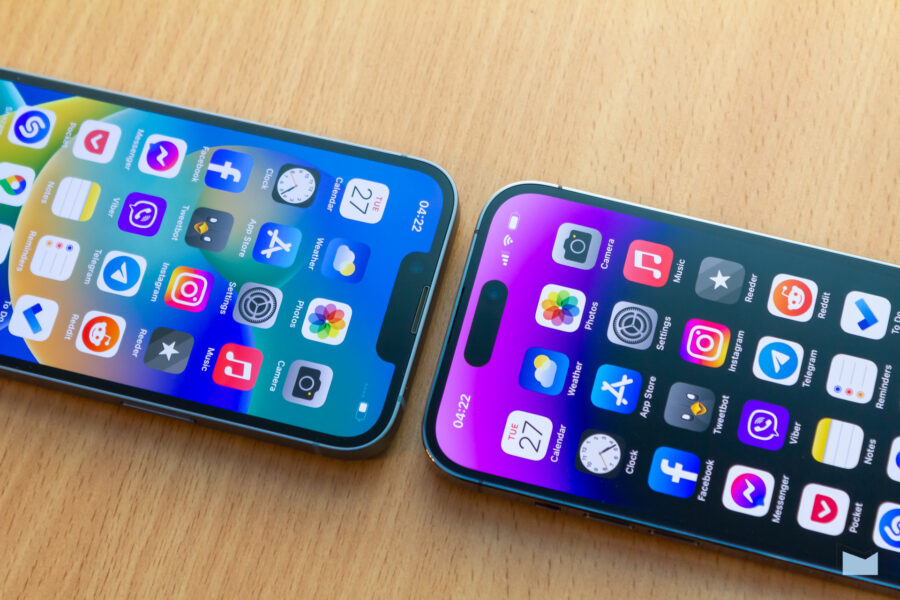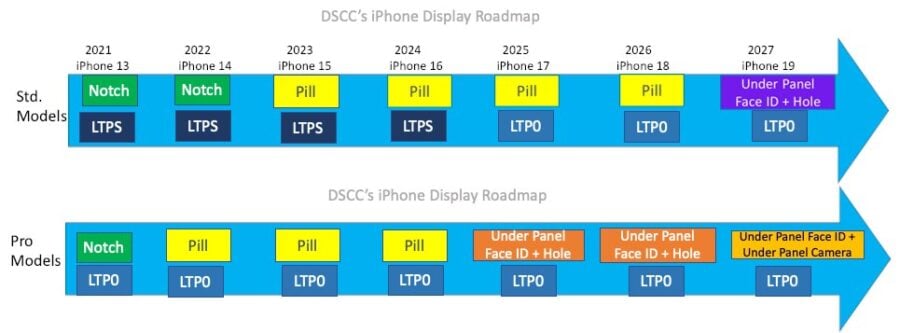Support for a high refresh rate of the image in the iPhone appeared with the iPhone 13 Pro model and is still exclusive to more expensive versions of the smartphone. Conventional models still use LTPS matrices, not LTPO, which can change the refresh rate depending on the user’s actions and the type of content.
The head of Display Supply Chain Consultants, Ross Young, has previously shared accurate predictions for the company’s displays. So far, he has revealed an iPhone display update plan that covers the 2021 to 2027 time frame, with details on upcoming display updates for the regular and Pro models.
Apple to go all LTPO in 2025, even base models to get 120Hz refresh, finally. https://t.co/n0ivg08pde pic.twitter.com/dwjGiHwn8u
— Ross Young (@DSCCRoss) April 3, 2023
According to this roadmap, the iPhone 15 and iPhone 16 will still have LPTS matrices, but already with Dynamic Island, as in the iPhone 14 Pro. Further, LTPO displays will be installed, starting with the iPhone 17 (if the marking of the models does not change by then) in 2025. This will allow devices not only to support ProMotion but also the Always-On function, in which the smartphone reduces the refresh rate to 1 Hz.
Meanwhile, the Pro models will be able to hide the Face ID sensors under the display starting in 2025 and have a separate cutout for the camera, and in 2027 they will hide it as well.
With such plans, Apple is unlikely to revolutionize smartphone screens. A high image refresh rate is not something new and is supported even in some budget devices. Cameras under the screens can also already be found, although they remain an advantage of flagship gadgets (for example, Samsung Galaxy Fold4). However, such a margin of time gives the company the opportunity to prepare a higher-quality product with fewer defects.






Loading comments …